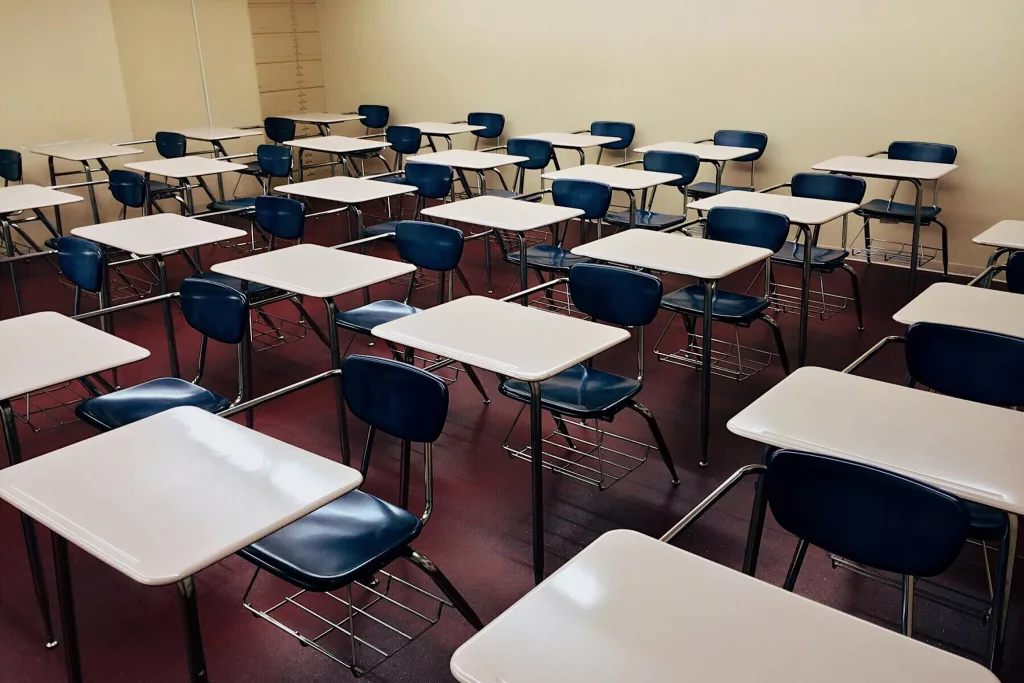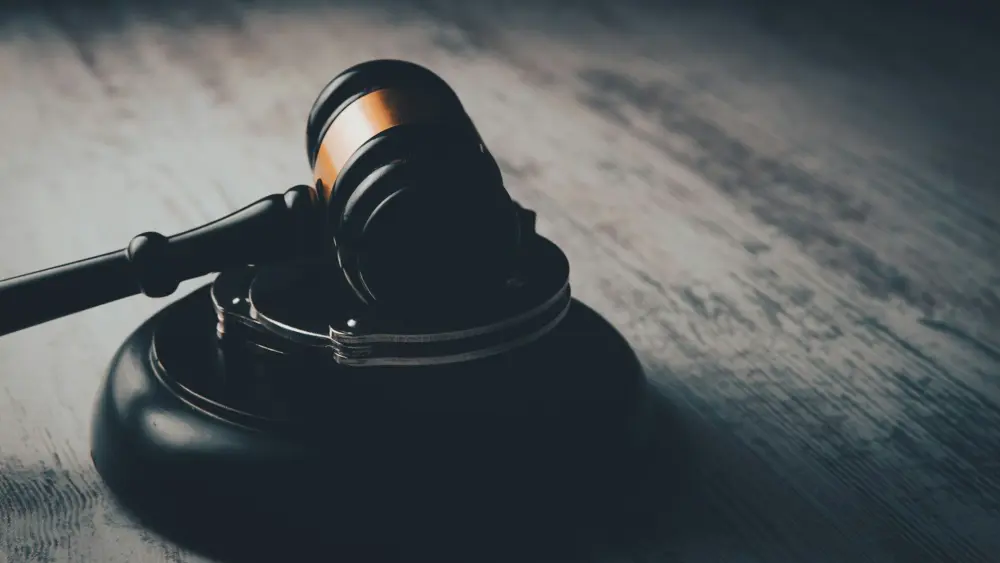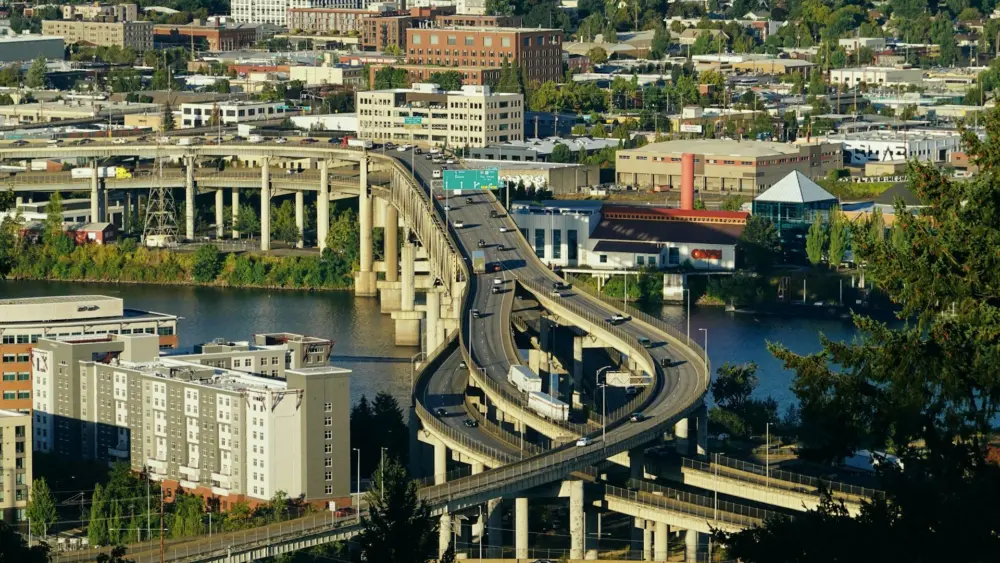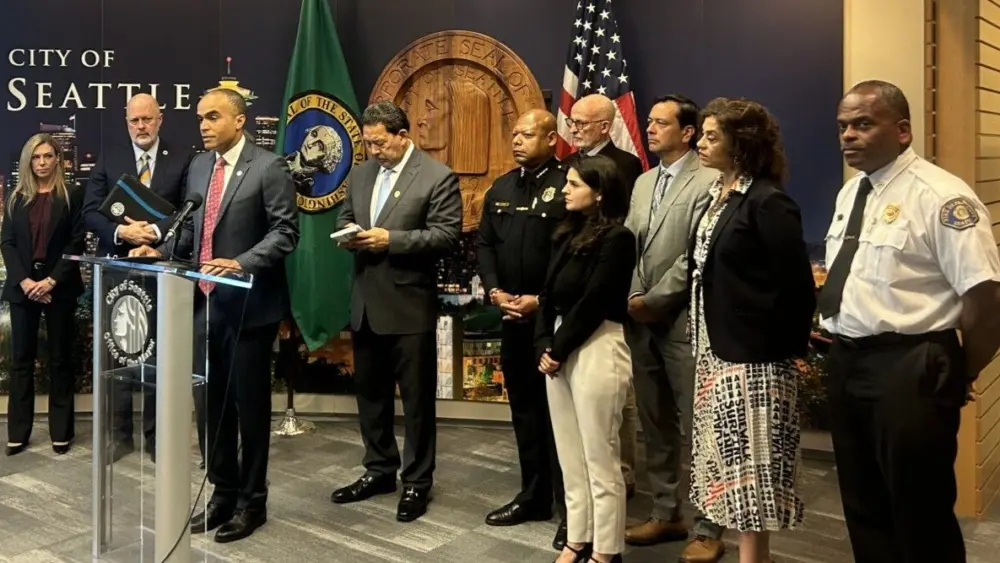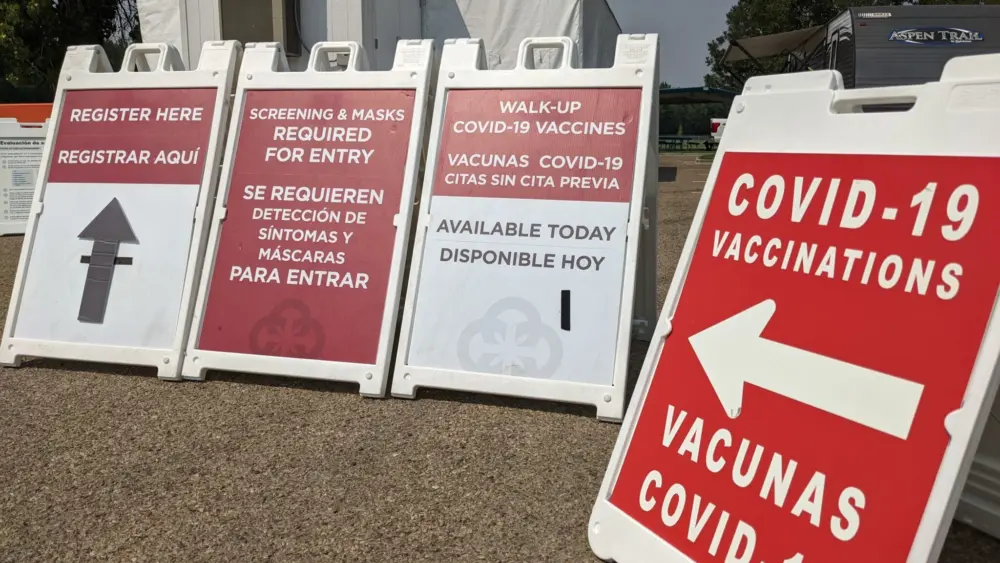BOISE, ID – Some Idaho education organizations and a local school board chairman said they are feeling squeezed by the public school budgets the Idaho Legislature set during the recent 2025 legislative session at the Idaho State Capitol in Boise.
In interviews this month, officials with the Idaho School Boards Association, the Idaho Education Association, a member of the Madison School District Board of Trustees and the superintendent of the Post Falls School District said they are frustrated with the new fiscal year 2026 public school budgets. They said the public schools budget provides no new additional state funding for anything other than pay increases and benefits for school staff.
Meanwhile, a key state legislator said the Idaho Legislature chose to focus on funding school facilities and reducing taxes.
Meanwhile, there is no additional new funding in the public school budgets for special education programs, classroom upgrades, technology, extra curricular programs or operations funding.
“Excepting the Luna laws budget that we had, this is the worst year for public schools from the state Legislature that I can remember,” Madison School District school board chair Brian Pyper said in a phone interview Friday.
Pyper was referring to a trio of education laws passed in 2011 that were named for former Superintendent of Public Instruction Tom Luna. Idaho voters repealed the Luna laws at the polls in the November 2012 general election.
Post Falls School District Superintendent Dena Naccarato agreed.
“In my opinion, it’s the worst legislative session in my time in Idaho, and I’ve been an educator for 31 years,” Naccarato said in a phone interview Wednesday.
Calls to change Idaho’s school funding formula intensify
Naccarato said one of the biggest problems is the public school funding formula that funds education based on an attendance calculation, not enrollment. Post Falls is the 11th largest school district in Idaho, and attendance averages about 92.6% of enrollment.
Because of that, Naccarato said her district takes a 7.4% hit on operations funding – the difference between 92.6% attendance versus the 100% enrollment number.
If 7% of the students are absent, Naccarato said that doesn’t mean she can turn down the heat by 7% or send 7% of the district’s teachers home without pay.
Idaho Superintendent of Public Instruction Debbie Critchfield praised the Idaho Legislature for providing additional money for salaries and benefits this year.
But Critchfield said districts depend on operations funding. Critchfield also called for Idaho to change its funding mechanism for public schools.
“Clearly, I believe the time to address the overall limitations of the current funding mechanism is past due, and that need was reiterated in the Legislature’s most recent Office of Performance Evaluations report,” Critchfield said in a written statement Tuesday. “A longterm fix of how we distribute funding and effectively use the money we have must be on the table.”
JFAC co-chair says Idaho legislators are focusing on tax cuts and payments for school facilities. Meanwhile, school enrollment is down.
Rep. Wendy Horman, an Idaho Falls Republican who serves as co-chair of the Idaho Legislature’s Joint Finance-Appropriations Committee, said the Idaho Legislature actually provided $400 million in new funding for public education this year, just in different places outside the school budget.
Horman wrote a column earlier this month praising the Idaho Legislature’s budget process and highlighting a $400 million increase for public schools.
In an interview with the Idaho Capital Sun on Monday, Horman said the money is located outside of the public school budgets – in tax cuts and in facilities payments to school districts that are used to pay down supplemental levies and bond issues for school facilities.
“If you’re only looking at the general fund, yeah, there’s $97.7 million, but that’s not all we gave to public schools – not by a long shot,” Horman said Monday.
Horman said she has consistently pushed for $100 million-plus increases in public school funding over a decade of working on public school budgets in the Idaho Legislature.
“(The public schools budget) has doubled in the time I’ve been on JFAC – It’s gone from $1.4 billion to $ 2.8 billion, plus this year,” Horman said.
“We have been exceedingly responsive to the school districts when they have told us where they need the funds – that’s where we’ve put them,” Horman said. “But you can’t look at any one year in isolation. You have to look at the context. We focused on insurance. We focused on salaries. Now, the last couple of years, we’ve been focusing on facilities because that’s what people told us they needed.”
Idaho Legislature’s budget committee co-chairwoman says state lawmakers have shifted funding priorities
Horman acknowledged school leaders may be feeling a pinch with the budget this year. But she said it is not because the Idaho Legislature is short-changing schools.
Horman cited budget documents prepared by the Idaho Legislative Services Office as the source for her $400 million claim. The documents list:
$97.8 million increase in state general fund spending on public schools.$246 million in school facilities payments through a combination of House Bill 304, a property tax relief bill from this year’s legislative session, House Bill 521 from the 2024 legislative session and House Bill 292 from the 2023 legislative session.$50 million from House Bill 338 from the 2025 legislative session for the Public School Facilities Cooperative Fund.$5 million from Senate Bill 1069 from the 2025 legislative session for literacy professional development and curriculum.
Horman also said she has fought to change the public school funding formula for 10 years and favors giving school boards discretion over spending. This year, Horman sponsored House Bill 279, an unsuccessful bill that sought to move Idaho to a per-student funding model based on attendance.
Why are education groups concerned with the Idaho public school budgets?
Idaho School Boards Association Deputy Director Quinn Perry said school board members have been asking about Horman’s column and questioning if the budget increase adds up.
“Our members are asking questions based on what they read from policy makers, and they are asking, ‘where did it increase that much?’” Perry said in a phone interview. “We are having to over-explain in our breakdown of the budget why that is not new money and why it can’t go into operations. It’s specifically for facilities infrastructure.”
Pyper said the facilities money is valuable, but districts don’t have any flexibility in spending it. The facilities money is being used to reduce tax rates or pay off debt that voters agreed to when they passed a school bond to finance large long-term projects, such as the construction of new school buildings or roof repairs.
“I recognize that has been allocated to help school districts pay off bonds and levies but that’s all it can be used for,” Pyper said. “If we have levies or bonds, it goes to that and not operations. So that’s when we have to get creative or shuffle money around from other places.”
Another concern is that charter schools, which are public schools in Idaho, are not able to access the facilities funding because they cannot run school bonds or levies, Perry said.
What about discretionary spending for Idaho’s public school districts?
Perry and Pyper said they have big two concerns with the new public schools budget the Idaho Legislature set.
First, there is an overall decrease in the amount of discretionary funding that public schools receive.
The money is called discretionary spending because school leaders have flexibility in how they spend it on local needs and priorities.
Critchfield, Idaho’s superintendent of public instruction, said discretionary funding is crucial for local school districts. Education officials and superintendents often use the terms “discretionary funding” and “operations funding” interchangeably.
“A priority area of a local school budget is always operational dollars, which provide the greatest ability to address local needs due to their flexibility,” Critchfield said Tuesday. “Without an inflation-related adjustment in operational funding, districts will continue to pay for things like special education, fuel and utilities with discretionary dollars that have remained flat.”
Pyper, from the Madison School Board, said the decrease in discretionary/operations funding could force school districts to be creative financially or consider supplemental levies to pay for unexpected expenses, enhancements or any new programs.
“We have huge uncertainty with all the tariffs, and we are still looking at 6-to-7% inflation,” Pyper said.
Horman, the legislator who co-chairs the budget committee, said discretionary spending is going down because of a decrease in Idaho students and changes to the types of students.
One of the calculations driving Idaho’s public school budget is the number of support units in the budget. For budget purposes, one support unit is basically the equivalent of one school classroom. Because there is a decrease in the number of public school students in Idaho, the number of support units the state’s public school budget is built around decreased, which led to a decrease in the amount of discretionary spending for public schools.
Discretionary/operations spending in Idaho public school budgets
Fiscal year 2022: $262 million
Fiscal year 2023: $274.9 million, 5% increase
Fiscal year 2024: $329.2 million, 20% increase
Fiscal year 2025: $379.2 million, 15% increase
Fiscal year 2026: $374.5 million, 1% decrease
Source: Idaho Department of Education
“Discretionary funding impacts local taxpayers the most because patrons are often asked to supplement the variable costs of educating their students and running their local schools,” Critchfield said. “Statewide enrollment has experienced slight changes the last several years, but the cost of running a school district continues to increase.”
New evaluation report highlights special education funding gap in Idaho
Perry and Pyper also said the state is underfunding special education and special needs students.
This year, the Idaho Legislature did not provide any additional money to bridge an $82.2 million special education funding gap that the nonpartisan Idaho Office of Performance Evaluations highlighted in a March report.
House Bill 291 would have created a new $3 million state fund to help high-needs students with disabilities. Horman voted for it, but when House Bill 291 reached the Idaho Senate, senators killed it by a single vote.
“The Legislature’s own report showed they are underfunding special needs by about $85 million across the state and they refused to provide us a $3 million stopgap to address critical needs, saying the money is sufficient when their own report says it is not,” Pyper said.
Naccarato, the superintendent of the Post Falls School District, said her district receives about $5.6 million in state and federal funding for special education, but it spent about $8.2 million because the number of special education students is increasing. Naccarato said there is a $2.6 million gap that she has to make up with money from elsewhere.
“My discretionary budget is fake news,” Neccarato said. “It’s not discretionary, it’s operations funding because the legislative body continues to do nothing to support public education in the 21st century.”
Naccarato said the Post Falls School District is seeking a supplemental levy in the upcoming May 20 election. She said the district is seeking the levy due to funding gaps Naccarato blames the Idaho Legislature for, as well as a desire to pay staff more than what the Idaho Legislature provides.
“Most school districts in Idaho have to rely on supplemental levies for operations costs,” Naccarato said, adding that is why she calls them fundamental levies, not supplemental levies.
Idaho Legislature approved tax credits for tuition at private schools this year
Along with concerns about the state’s public school budget, many of the education officials interviewed in this article are concerned about House Bill 93, a new law co-sponsored by Horman that provides a refundable tax credit to Idaho families for education expenses, including tuition at private religious schools.
“There is a definite hesitation this year on the back of HB 93 where the big fear among school board leaders is their needs will be overshadowed,” Perry said.
Horman disagreed and said House Bill 93 did not take money from the public school budget and is a separate program and initiative.
“As I explained on the (House) floor multiple times, they are unrelated,” Horman said.
Behind the numbers: enrollment and school funding
The first spreadsheet posted below this box shows 10 years’ worth of enrollment data at Idaho public schools. Total enrollment this school year is down by almost 500 students compared to last year.
The second document shows how support units are calculated in public school budgets. For budget purposes, a support unit is roughly equivalent to one Idaho school classroom.
The documents were provided by Horman via the Idaho Legislative Services Office.
This story first appeared on Idaho Capital Sun.

